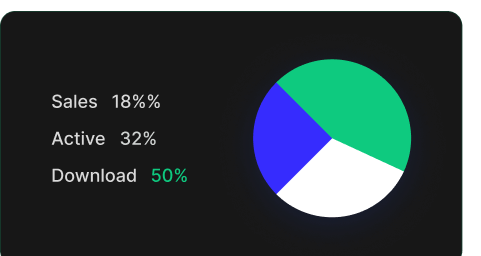
Launch Faster, Scale Smarter – Transform Your Website!
Get your website up and running quickly with powerful, scalable SaaS solutions designed to boost performance and drive business growth effortlessly.

Join 20,000+ Happy Users – Start Building Today!








Why Choose Us
Everything You Need, All in One Place
Lorem ipsum is placeholder text commonly used in the graphic, print, and publishing industries for previewing layouts and visual mockups.
Streamline workflows and boost efficiency with AI automation.
Sed ut perspiciatis unde omnis iste natus error sit voluptatem accusantium doloremque laudantium

Generate detailed reports and insights with AI-powered analysis.
Sed ut perspiciatis unde omnis iste natus error sit voluptatem accusantium doloremque laudantium’, ‘saaslauncher’) ?>


AI Automation
Lorem ipsum dolor sit amet, consectetur adipiscing elit, sed do eiusmod tempor incididunt ut labore et dolore magna aliqua.

Completely Flexible
Lorem ipsum dolor sit amet, consectetur adipiscing elit, sed do eiusmod tempor incididunt ut labore et dolore magna aliqua.

Integration & Sync
Lorem ipsum dolor sit amet, consectetur adipiscing elit, sed do eiusmod tempor incididunt ut labore et dolore magna aliqua.
#highlights
Smart Strategies Tools to Boost Your Business
Lorem ipsum is placeholder text commonly used in the graphic, print, and publishing industries for previewing layouts and visual mockups.
- Establish a Clear Revenue Model
- Establish a Clear Revenue Model


#highlights
Cutting-Edge Solutions for Scaling Your Business
Lorem ipsum is placeholder text commonly used in the graphic, print, and publishing industries for previewing layouts and visual mockups.

Business Strategy
Lorem ipsum is placeholder text commonly used in the publishing industries for layouts and visual mockups.

Business Strategy
Lorem ipsum is placeholder text commonly used in the publishing industries for previewing layouts and visual mockups.
Features and Benefits
Transform and Automate Your Workflow with Seamless Integration
Lorem ipsum is placeholder text commonly used in the graphic, print, and publishing industries for previewing layouts and visual mockups.

Customizable Models
Lorem ipsum dolor sit amet, consectetur adipiscing elit, sed do eiusmod tempor incididunt ut labore

Smart Alerts & Notifications
Lorem ipsum dolor sit amet, consectetur adipiscing elit, sed do eiusmod tempor incididunt ut labore

Adaptive Learning
Lorem ipsum dolor sit amet, consectetur adipiscing elit, sed do eiusmod tempor incididunt ut labore

Seamless Integration
Lorem ipsum dolor sit amet, consectetur adipiscing elit, sed do eiusmod tempor incididunt ut labore

Automation & Sync
Lorem ipsum dolor sit amet, consectetur adipiscing elit, sed do eiusmod tempor incididunt ut labore

AI-Powered Insights
Lorem ipsum dolor sit amet, consectetur adipiscing elit, sed do eiusmod tempor incididunt ut labore
Pricing & Plans
Simple Plans, Powerful Value
Lorem ipsum is placeholder text commonly used in the graphic, print, and publishing industries for previewing layouts and visual mockups.
$49
/Year
Basic
Lorem ipsum is placeholder text commonly used in the graphic, print, and publishing industries.
$149
/Year
Freelancer
Lorem ipsum is placeholder text commonly used in the graphic, print, and publishing industries.
$449
/Year
Unlimited
Lorem ipsum is placeholder text commonly used in the graphic, print, and publishing industries.
Still unsure? Every purchase comes with a 100% money-back guarantee. Experience our product risk-free, and if it’s not for you, we’ll ensure you’re fully refunded—no questions asked.
Latest Insights & Updates
Lorem ipsum dolor sit amet, consectetur adipiscing elit, sed do eiusmod tempor incididunt ut labore et dolore magna aliqua.
Another Page (Redirection)
Another Page (Redirection)Another Page (Redirection)Another Page (Redirection)Another Page (Redirection)Another Page (Redirection)Another Page (Redirection)Another Page (Redirection)Another Page (Redirection)Another…
Testimonials & Reviews
Join Thousands of Satisfied Customers!
See why thousands of businesses trust us! Discover how our SaaS solutions have helped clients streamline operations and achieve success.

Mat Brandson
Founder – Mat Technology
Sed ut perspiciatis unde omnis iste natus error sit voluptatem accusantium doloremque laudantium, totam rem aperiam.


Loya Potmen
CFO – Potman Industries
Sed ut perspiciatis unde omnis iste natus error sit voluptatem accusantium doloremque laudantium, totam rem aperiam.


Alex Cari
Founder – Alex Technology
Sed ut perspiciatis unde omnis iste natus error sit voluptatem accusantium doloremque laudantium, totam rem aperiam.


Lexi Lorem
COO – Lexy Technology
Sed ut perspiciatis unde omnis iste natus error sit voluptatem accusantium doloremque laudantium, totam rem aperiam.


Robert K
Founder – RK Technology
Sed ut perspiciatis unde omnis iste natus error sit voluptatem accusantium doloremque laudantium, totam rem aperiam.


Darci L
Founder – DL Technology
Sed ut perspiciatis unde omnis iste natus error sit voluptatem accusantium doloremque laudantium, totam rem aperiam.

FAQ
Got Questions? We’ve Got Answers.
Lorem ipsum is placeholder text commonly used in the graphic, print, and publishing industries for previewing layouts and visual mockups.
What is Full Site Editing in WordPress?
Full Site Editing in WordPress allows users to create and edit their website more efficiently and with more control. It enables users to create unique and custom designs without needing to have advanced coding skills.
What are the benefits of Full Site Editing in WordPress?
Full Site Editing in WordPress refers to a feature that allows users to create and edit their website’s entire layout, including the header, footer, and other structural elements, using a visual editor.
How do I enable Full Site Editing in WordPress?
To enable Full Site Editing in WordPress, you need to ensure that you are using a compatible WordPress theme that supports Full Site Editing. You will also need to install the latest version of WordPress and enable the Gutenberg editor.
What are the benefits of Full Site Editing in WordPress?
Full Site Editing in WordPress refers to a feature that allows users to create and edit their website’s entire layout, including the header, footer, and other structural elements, using a visual editor.
How do I enable Full Site Editing in WordPress?
To enable Full Site Editing in WordPress, you need to ensure that you are using a compatible WordPress theme that supports Full Site Editing. You will also need to install the latest version of WordPress and enable the Gutenberg editor.
What are some popular WordPress themes that support Full Site Editing?
Some popular WordPress themes that support Full Site Editing include the FotaWP Theme, ReviveNews Theme, and the Hello Agency Theme. These themes have built-in support for Full Site Editing, allowing users to create custom designs without needing to know how to code.
What are the benefits of Full Site Editing in WordPress?
Full Site Editing in WordPress refers to a feature that allows users to create and edit their website’s entire layout, including the header, footer, and other structural elements, using a visual editor.
Get Started
Elevate Your Business with Smart, Scalable Solutions!
Lorem ipsum is placeholder text commonly used in the graphic, print, and publishing industries for previewing layouts and visual mockups.


